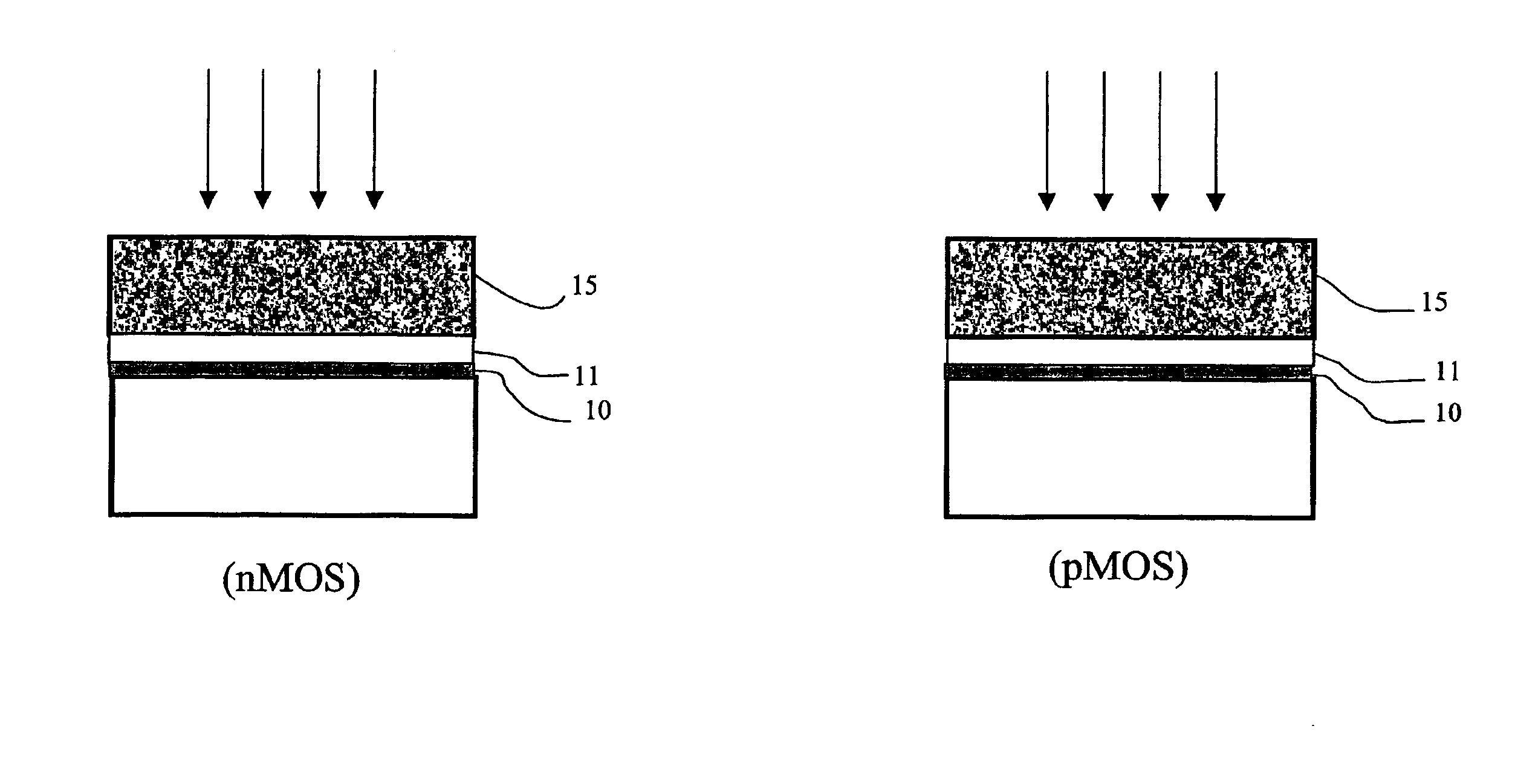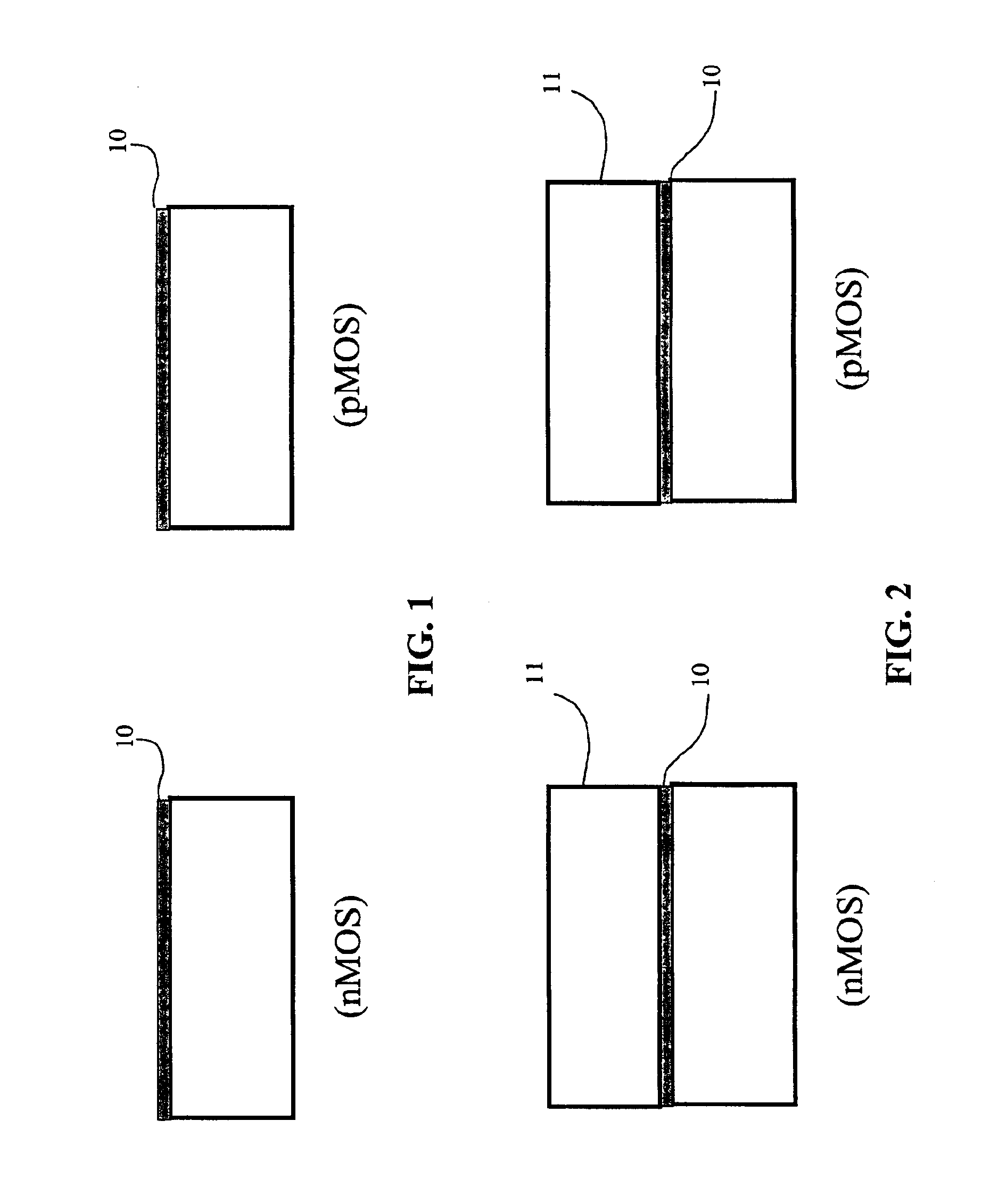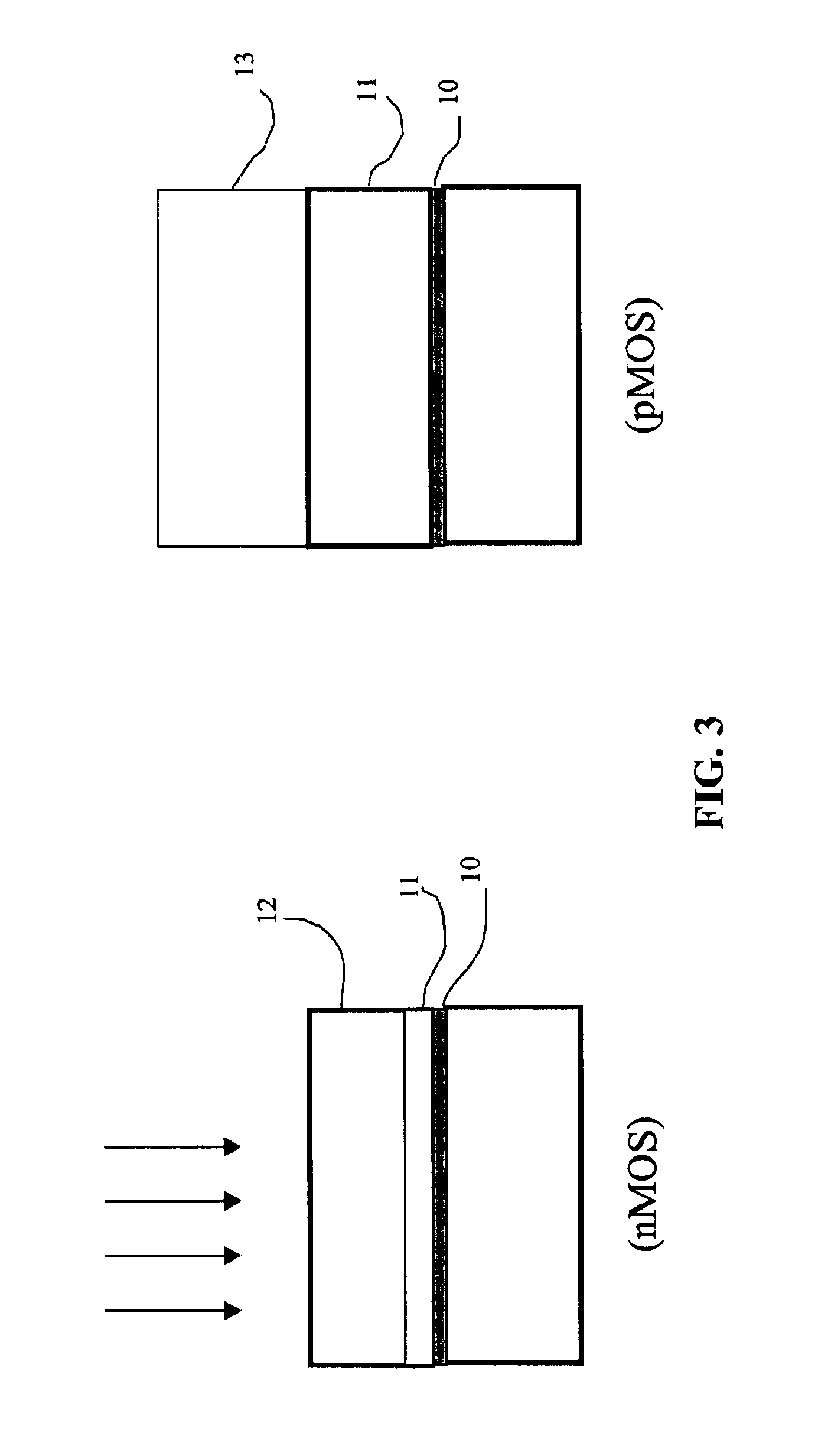Formation of dual work function gate electrode
a dual-function, gate electrode technology, applied in the direction of basic electric elements, semiconductor/solid-state device manufacturing, electrical equipment, etc., can solve the problems of difficult formation of p-type doped gate electrodes, inability to obtain uniform gate uniformity, and extremely difficult critical dimension of gates, etc., to achieve the effect of reducing boron penetration and eliminating boron depletion
- Summary
- Abstract
- Description
- Claims
- Application Information
AI Technical Summary
Benefits of technology
Problems solved by technology
Method used
Image
Examples
Embodiment Construction
As mentioned, the invention process is a method of forming CMOS structures of p-type doped gate electrodes without boron penetration into the channel region and without boron depletion near the gate oxide region using laser annealing at an energy level sufficient to melt at least a portion of a-Si but insufficient to melt the poly-Si.
In this regard, reference is now made to FIG. 1 which depicts a simplified cross sectional configuration of a CMOS showing the step of gate oxidation over a channel for a nMOS transistor and over a channel of a pMOS transistor, in the formation of a dual work function gate electrode using bi-layer (a-Si / poly-Si), implant, and laser annealing. The gate oxidation layer of oxide 10 is deposited on each nMOS and pMOS site. Thereafter, as may be seen in FIG. 2, an undoped poly-Si layer 11 is deposited on the oxide layer 10. Preferably, the undoped poly Si deposition is between 500˜3000 Å.
In FIG. 3 an amorphous silicon (a-Si) layer is next deposited by use of...
PUM
 Login to View More
Login to View More Abstract
Description
Claims
Application Information
 Login to View More
Login to View More - R&D
- Intellectual Property
- Life Sciences
- Materials
- Tech Scout
- Unparalleled Data Quality
- Higher Quality Content
- 60% Fewer Hallucinations
Browse by: Latest US Patents, China's latest patents, Technical Efficacy Thesaurus, Application Domain, Technology Topic, Popular Technical Reports.
© 2025 PatSnap. All rights reserved.Legal|Privacy policy|Modern Slavery Act Transparency Statement|Sitemap|About US| Contact US: help@patsnap.com



